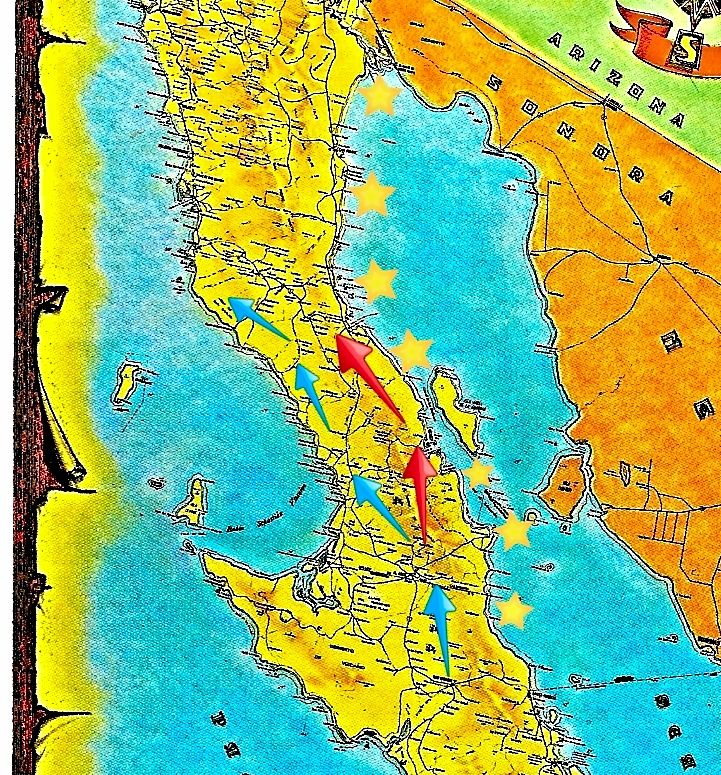
Consag made three expeditions to seek new mission sites north from San Ignacio, one by sea in 1746 and two by land in 1751 and 1753.
The first land trip kept him mostly on the Pacific slope of the peninsula and the second land trip kept him mostly along the gulf slope.
Baja is not that wide in that region and from the tops of some peaks you can see both coasts. The Pacific coast is usually under a cloud or fog bank, so the ocean will be hidden... but not always.
Not sure how this will look online, but I just made this map for you as a visual aid...
The stars on the east coast of Baja are his 1746 route.
The blue arrows are his 1751 route.
The bottom blue arrow and the red arrows are his 1753 route.
The bottom blue arrow begins at San Ignacio, Consag's mission. That blue arrow points to (near) La Piedad, which became Mission Santa Gertrudis in 1752.
The bottom star is at 'San Carlos' landing where the sea expedition began.

